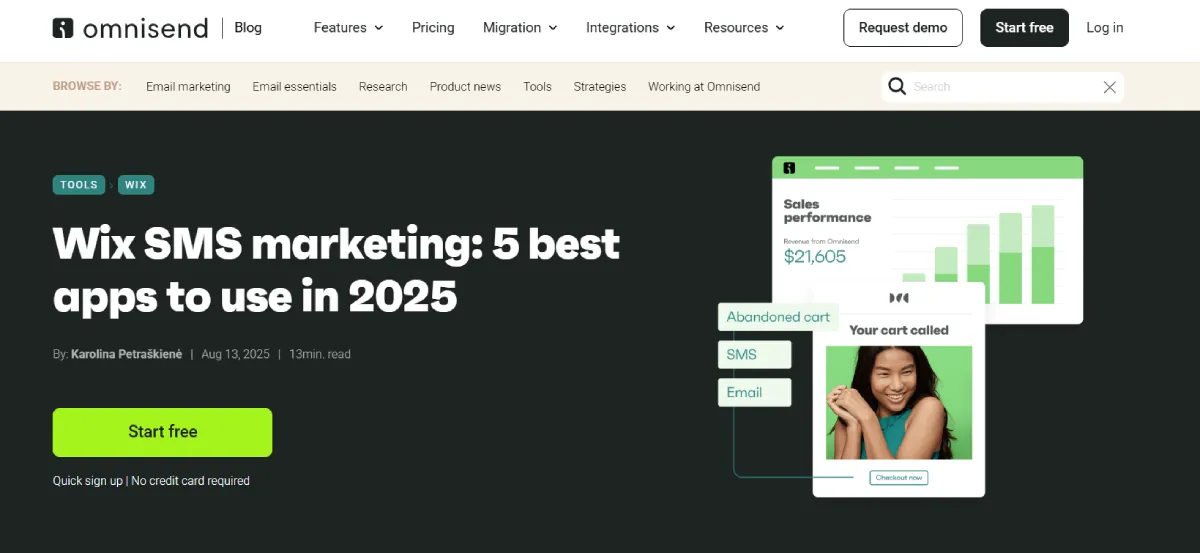7 Mobile Marketing Red Flags and How Technology Can Help You to Overcome Them
Mobile marketing is fast becoming an essential component of lead generation and conversion optimization, but is your business making one of these major errors without realizing it?
The appeal of mobile marketing is clear. Virtually every consumer demographic is attached to their smartphones, and Grand View Research data suggests that the mobile marketing global market size is expected to grow to a value of $81.74 billion by 2030, representing a CAGR of 23.9%.
Despite its clear advantages, all too many marketers are still getting their mobile marketing strategies in a muddle, and red flags are emerging alongside poor practice.
How can you avoid these mobile marketing pitfalls? Let’s explore seven major mobile marketing red flags and how technology can help you to overcome them:
1. You’re Not Chasing Abandoned Carts
Cart abandonment rates are as high as 85.65% on mobile devices, and if you’re failing to follow up on customer interest, then you’re putting yourself at a disadvantage.
Customers can abandon carts for all kinds of reasons. They may not have their payment information to hand, they could be waiting for a less busy moment to complete a purchase, or they simply may not be fully convinced by your product at the time.
Whatever the reason, you must jog their memory and offer them the chance to recover their abandoned carts.
If your store is built on Wix, for example, you can use a Wix text marketing solution to ensure that texts are sent out automatically if the user abandons the cart. This simple yet effective strategy can improve your conversion rate.
2. You Aren’t Using Predictive Analytics
With the right customer data platform (CDP) and artificial intelligence integrations, it’s possible for marketers to create a comprehensive predictive analytics ecosystem that can anticipate customer actions and preferences based on how they interact with your store.
Analyzing historical data and patterns can help brands to offer personalized recommendations and solutions, helping to drive more engagement and to nurture higher levels of customer loyalty.
3. Your Landing Pages are Too Slow
There’s no point in working all-out to get your mobile marketing strategy firing on all cylinders if you haven’t put any effort into your landing page.
Mobile users have an exceptionally low amount of patience when it comes to click-through loading times. If your landing page takes longer than three seconds to load, you’ll lose an average of 53% of mobile visitors. If a transaction is delayed by two seconds, it can result in abandonment rates of up to 87%.
Be sure to test your landing page loading times on different mobile browsers to ensure that they’re faster than that all-important three-second threshold to keep your leads from getting fed up with waiting.
4. You’re Failing to Measure Your Results
Mobile marketing success can mean different things to different businesses. Don’t follow the crowd when it comes to monitoring your mobile campaign success. Some marketing teams will be looking for click-through rates, and others will be after conversions.
Define what success looks like to you and how it would be achieved within the context of your business goals and objectives.
Your measurable objectives will revolve around impressions, sessions, events, conversions, click-through rates, downloads, retention rates, customer lifetime value (CLV), feedback, and ROI, and it’s important to use these insights to gain a full understanding of your success.
Platforms like Google Analytics, Google Play Console, Firebase, or App Store Connect can all support these insights.
5. Your Site Isn’t Optimized for Mobile
More than half of the traffic your website receives will be mobile-based, making your mobile campaigns particularly lucrative when you get your engagement right. But your hard work can be undone if your website isn’t optimized for smartphones.
Accelerated mobile pages (AMP) should be a core component of your mobile marketing strategy, and you should test your website on a range of different devices to ensure that your page layouts are easy to navigate, no matter how small the screen may be.
Mobile optimization can involve buttons and links that are large enough to protect against accidental clicks, minimizing heavy scripts for faster loading, and avoiding overloading pages with images and buttons.
Google offers a Mobile-Friendly Test to help you check whether your website offers a friendly experience for leads arriving via mobile marketing campaigns.
6. Your Campaigns Lack Relevance
While all of your marketing materials should prioritize relevance that’s tailored to the customer, it’s especially important as part of a mobile marketing campaign because of the higher open rates associated.
Irrelevant messages run the risk of losing loyal customers who have already been engaged enough to share their cell number with you. Fortunately, AI tools can help to accurately segment customers based on how they interact with your website and their purchase history to help you tailor your SMS messages and push notifications to match their expectations.
7. You Haven’t Utilized QR Codes
Quick Response (QR) codes can form a bridge between mobile devices and your website and can be a great way to interact with your leads in a more frictionless manner.
Failing to implement QR codes as part of your marketing strategy means that you can miss out on engaging promotions, contextual information to aid purchase decisions, and real-world special offers.
There are plenty of free QR code generators online that can link to your pages, helping you to build stronger connections with smartphone users both in physical and digital environments.
Building Mobile Success
Creating a successful mobile marketing strategy can work wonders for your business and boost customer engagement at an unprecedented scale. However, there are plenty of common pitfalls to avoid when implementing your campaign.
By focusing on building a website that complements mobile browsers and by measuring the right data, you have the foundations of a strong mobile marketing strategy that can continue to drive engagement and those all-important conversions long into the future.

Leave a Reply